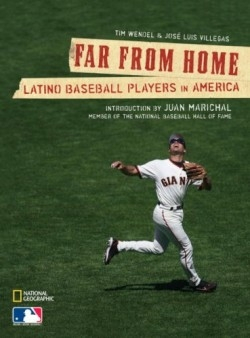Far From Home
Latino Baseball Players in America
For all the racism and discomfiture that African-American ballplayers endured in the years following Jackie Robinson’s debut in 1947, Latino players had it even worse. In addition to discrimination based on the color of their skin, there was also, in many cases, a language barrier. Black players, at least, plied their trade on home soil, but Latinos not only had to acclimate to a new geography, they were also thrust into the middle of an often perplexing cultural environment. Something as simple as ordering food could pose a challenge. Hall of Famer Orlando Cepeda has often spoken about how the San Francisco Giants tried to prevent the team’s Latino players from speaking Spanish at the ballpark. Similarly, the media in Pittsburgh embarrassed Pirates superstar Roberto Clemente by publishing his interviews in “dialect.”
Wendel, who has written extensively on the Latino baseball experience in works of both fiction and nonfiction, supplies the narrative for Far From Home, while Villegas, a staff photographer with the Sacramento Bee, contributes the photographs. The astute baseball reader will recognize his work from Away Games and Home is Everything, two more books on a similar theme*.*
Far From Home profiles several of the more successful players from such countries as Venezuela, Puerto Rico, and the Dominican Republic. The book is divided into time-frames highlighting the earliest players; the “Golden Era,” which featured such superstars as Clemente and Cepeda, as well as Juan Marichal (who contributes the foreword for the book), Minnie Minoso, and the three Alou brothers; and the new generation of Manny Ramirez, Vladimir Guerrero, David Ortiz, Ivan Rodriguez, Jose Reyes, Johan Santana…the list seems endless these days. In fact, players from Latin America now comprise almost thirty percent of all players on major league rosters.
Vallegas wrote the final chapter which considers the difficulties of being, in fact, so “far from home”—the melancholy and loneliness many of these young men face as the price for their love of the game. The snapshots concentrate primarily on the experiences of two young hopefuls, Miguel Tejada and Mario Encarcion, both from the Dominican Republic, as they adjust to fast food restaurants, malls, and other bits of Americana.
As one might expect from a National Geographic publication, the photos are as communicative as the text. They are both triumphant and heartbreaking as they wordlessly depict the emotions of jubilation and despair these young men have to go through in pursuit of the American—and Latino—dream.
Reviewed by
Ron Kaplan
Disclosure: This article is not an endorsement, but a review. The publisher of this book provided free copies of the book to have their book reviewed by a professional reviewer. No fee was paid by the publisher for this review. Foreword Reviews only recommends books that we love. Foreword Magazine, Inc. is disclosing this in accordance with the Federal Trade Commission’s 16 CFR, Part 255.

